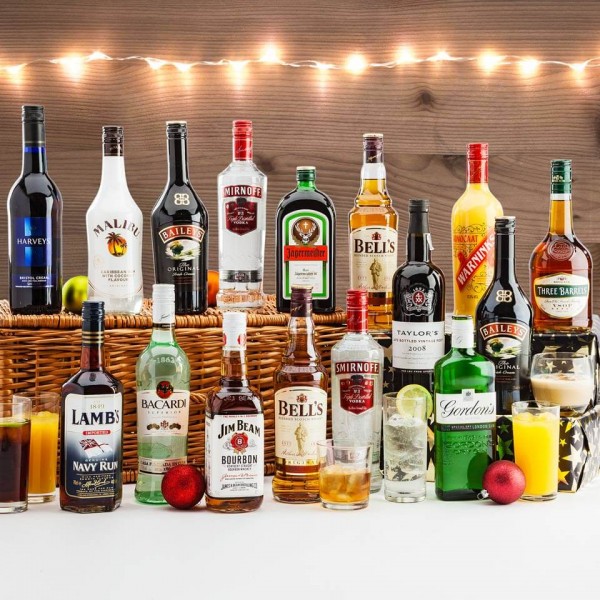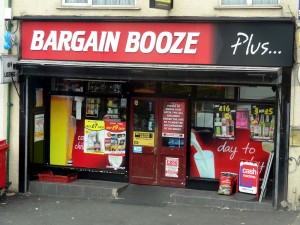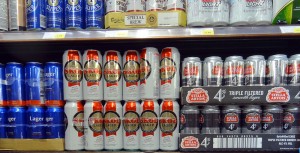Do you want to get drunk this festive season in the most tax efficient way: i.e. minimise the amount of tax you pay for the volume of alcohol that you drink? Do tax rates vary or are all alcoholic drinks taxed in the same or similar way?
 The UK government imposes two different types of tax on alcohol. One is a specific or fixed tax per unit, referred to as excise duty or excise tax. This varies depending on the type of alcohol and is the focus of this blog. The other is VAT, which is 20% of the price for all alcoholic drinks. The price on which VAT is based includes the impact of the excise tax.
The UK government imposes two different types of tax on alcohol. One is a specific or fixed tax per unit, referred to as excise duty or excise tax. This varies depending on the type of alcohol and is the focus of this blog. The other is VAT, which is 20% of the price for all alcoholic drinks. The price on which VAT is based includes the impact of the excise tax.
How does the implementation of excise tax differ between alcoholic drinks? Both the tax rate itself and the unit of output on which it is based vary: i.e. the volume of liquid vs the volume of pure alcohol within the liquid.
For example, with lager, beer and spirits the excise tax depends on the units of alcohol in the drink rather than the number of litres. The tax works in the following way. It is based on the alcohol by volume or ABV of the lager, beer or spirit. This is often displayed on the bottle or can. ABV is the percentage of the drink that is pure alcohol. Therefore, if a one-litre bottle of lager has an ABV of 1%, then 10ml of the bottle contains pure alcohol. Ten millilitres of pure alcohol is one unit of alcohol. If a one litre bottle of lager had an ABV of 5% it contains 5 units of alcohol.
Excise duties on spirits are the simplest of all the alcohol taxes. The rate for 2017/18 is 28.74p for each percentage of ABV or unit of alcohol in a one-litre bottle. Most spirits have an ABV of 40%. This means that there are 40 units of alcohol in a litre bottle and the excise tax payable on that bottle is £11.50 (40 × 28.74p). If a litre bottle had an ABV of 57%, such as Woods Navy Rum, then the excise tax would be or £16.38 (57 × 28.74p). Although the volume of liquid is the same in each case, the excise tax has increased by £4.88 because the alcohol content has increased.
For cider and wine the system is quite different. Within certain bands of alcoholic strength, the excise duty is based on the volume of the drink rather than by its ABV. For example, the excise tax on a litre of cider with an ABV of between 1.2% and 7.5% is 40.38p. This has the effect of reducing the tax rate per unit of alcohol as the alcoholic content of the cider increases (up to a limit of 7.5%). For example, the rate of excise tax per unit of alcohol for a litre bottle of cider with an ABV of 2% is 20.19p (40.38/2) whereas for a litre bottle of cider with an ABV of 7.5% it is just 5.39p (40.38/7.5). Wine is taxed in a similar way. A litre of wine with an ABV of between 5.5% and 15% is taxed at 288.65p per litre.
The excise tax rates per unit of alcohol for different drinks are illustrated below.
|
Drink
|
ABV
|
Excise tax per
unit of alcohol |
| Beer/lager |
5%
|
19.08p
|
| Beer/lager |
8%
|
24.77p
|
| Spirits |
1-100%
|
28.74p
|
| Wine |
12.5%
|
21.90p
|
| Wine |
15%
|
19.24p
|
| Cider |
5%
|
8.08p
|
| Cider |
7.5%
|
5.39p
|
The table clearly shows that cider with an ABV of 7.5 per cent is by far the most tax effective way of consuming alcohol.
Although this blog is a rather light-hearted look at excise tax, it does help to illustrate the strange anomalies of the system used in the UK. Research by the Institute for Fiscal Studies (IFS) has indicated that heavier drinkers are more likely to switch between different alcoholic products in response to price changes. They also tend to drink products with more units of alcohol in them: i.e. spirits such as whisky and gin. For these reasons, the IFS has suggested that the excise tax rates on cider and spirits should be increased.
In the November budget, the Chancellor announced plans to introduce a new excise tax rate on still cider with an ABV of between 6.9% and 7.5%.
The excise taxes on cider and wine are based on the volume of liquid because of the European Community Directive 92/84/EEC. It will be interesting to see if the government changes this system to one based on alcohol content once the UK had left the European Union.
Articles
Budget 2017 – Why is white cider being taxed more? BBC News (22/11/17)
Is it time for a flat tax on alcohol – health campaigners can drink to that The Telegraph, Christopher Snowdon (15/2/17)
Traditional cider makers say tax on strong brands will hurt their business The Guardian, Rob Davies (22/11/17)
Minimum price would increase cost of 70% of alcohol BBC News (15/12/17) Designing alcohol taxes IFS, Kate Smith (24/4/17) .
Designing alcohol taxes IFS, Kate Smith (24/4/17) .
Questions
- Explain the difference between an ad valorem tax and a specific tax.
- Illustrate the impact of an ad valorem tax and a specific tax on a demand and supply diagram.
- What is the excise tax rate per unit of alcohol on a litre bottle of cider with an ABV of 6%?
- What is the economic rationale for imposing excise tax on alcohol?
- How will the external costs of consuming alcohol differ from those of smoking cigarettes? Draw a marginal external cost of consumption curve for both products to illustrate the difference.
- Compare the impact of increasing excise tax rates on cider and spirits with introducing a minimum unit price for alcohol.
- In April 2012 the government in England and Wales imposed a ban on ‘below cost’ pricing of alcohol. Explain how this policy works and what impact you think it has had.

